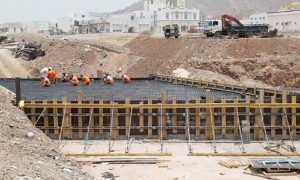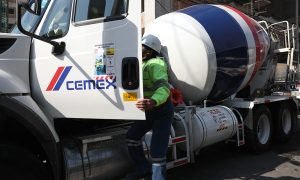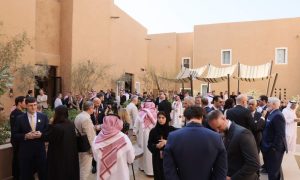Value Engineering Summit: Working harder and smarter
CDM Smith leveraged Bentley software to implement digital roadway design and save 50% of design hours

As the most populous city in the United Arab Emirates, Dubai’s roads need to accommodate a significant flow of traffic. Therefore, when CDM Smith studied the existing six-lane Dubai-Al Ain road, it saw significant traffic congestion and road safety issues. The organisation realised that the roadway needed some improvements.
The 67km major highway links the two major cities of Dubai and Al Ain and serves a link between remote local communities and private developments with downtown Dubai, making it an important piece of infrastructure for the emirate.
Based on CDM Smith’s study, the project would be divided into two phases, with the first phase comprised of two construction contracts. The first contract, with an overall value of $340m, consisted of adding five kilometers to the road, to link it to three major highways. CDM Smith was tasked with being the engineering and construction firm for the first contract of phase one.
Subhead: Designing Two Interchanges in a Cost-effective Manner
CDM Smith proposed the construction of two interchanges to better improve traffic flow between the Dubai-Al Ain road and the three major highways. The team realised, however, that it would need to undergo a rigorous value engineering exercise to create the most cost-effective solution and seize potential opportunities. The timeline was also tight, leaving no room for multiple design iterations or constant rework. The team needed applications that would allow them to easily create many redesign integrations, cost-comparison analysis, and impact visualisation.
The first interchange would be an upgrade to an existing cloverleaf design to a fully directional, free-flow interchange. The new design would also include additional loops that would allow vehicles to safely make U-turns in all directions. Current bridges would be replaced to widen the road and provide more room for traffic. This process, however, would require a special structural design and construction methodology to avoid disturbance to traffic. The second proposed interchange would be a brand-new, free-flow structure that would utilize an existing left-turn ramp bridge.
Implementing Digital Design Software for Enhanced Design
To enhance these designs and provide better visualisation of them to project stakeholders, CDM Smith chose Bentley’s integrated design suite to successfully deliver the design-bid-build project. The team began by using OpenRoads for 3D design and modeling of the highway.
The application allowed the team to create a single model where multiple disciplines could collaborate simultaneously. This practice helped CDM streamline the design of the complex interchanges under a tight schedule and with maximum efficiency. Using the solution, the team was able to limit design reworks, allowing them to meet the project’s allocated budget.
Once the roadway was designed, it was important to design new, updated stormwater structures. As the region can experience severe flooding during rainy seasons, this practice would ensure that the roadway was protected and help reduce flooding impact on the structure.
For this, CDM Smith leveraged OpenFlows SewerGEMS to design the stormwater assets, and the application helped the team provide an accurate, integrated design. Project team members were able to quickly solve drainage issues by improving visualisation of the stormwater network and easily share the design with others for improved collaboration.
Another way that CDM Smith improved visualisation was by using LumenRT’s rendering capabilities. The team used OpenRoads ConceptStation to evaluate different design scenarios to determine the estimated costs. Then, the team chose the most efficient design and fed it into LumenRT, creating flyovers and walkthroughs to better showoff the design to project stakeholders. This practice allowed for faster feedback turnarounds and better understanding of how the design would eventually look when completed.
Saving Design Time and Delivering Project within Budget
By using Bentley applications, CDM Smith streamlined the design time to save 50% in design hours, allowing the organisation to allocate fewer designers to the project. However, despite the shortened timeline and limited resources, the project team still provided an accurate design with minimal errors and reworks. This high-level of quality allowed team members to deliver the project on time and within budget.
CDM Smith presented a roadway design that will alleviate the current traffic congestion and promote road safety by eliminating traffic weaving between major road corridors while also maximising capacity. These benefits will all help strengthen the link between the two cities of Dubai and Al Ain.
“With a saving of more than 50% in design hours, the project team was able to provide an accurate design with minimal errors and reworks done, while meeting the project’s tight schedule and budget. This practice has saved the company hundreds of design hours and helped allocate more resources on the project,” concluded Mohamed Momtaz Abdelal, P.E., Highways Design lead at CDM Smith.
Project Summary
Organisation: CDM Smith Inc
Solution: Roads and Highways
Location: Dubai, United Arab Emirates
Project Objectives:
- To redesign the 67-kilometer, heavily trafficked highway connecting Dubai and Al Ain.
- To streamline roadway design practices and improve communication with digital workflows.
Products used: LumenRT, MicroStation, OpenRoads, OpenFlows SewerGEMS
Return on Investment:
- OpenRoads helped CDM Smith save 50% in design hours while still providing a high-quality design on time and within budget
- CDM Smith presented a roadway design that will alleviate the current traffic congestion and promote road safety by eliminating traffic weaving between major road corridors, while also maximising capacity
- The new, enhanced roadway will help strengthen the link between Dubai and Al Ain

























